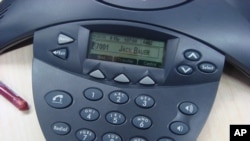One telephone feature that seemed revolutionary when it was introduced in the 1970s - but now is quite standard - is “Caller ID.” It’s a message that appears on your phone as it’s ringing, showing you the telephone number of the person or organization calling. Some systems display the names of callers, as well as the number.
When the phone rings and Caller ID flashes an unfamiliar number, you can decide to ignore it, assuming it’s a sales pitch you really don’t want to hear. Or one of those annoying robotic messages. If the call turns out to be from someone you might very well have wanted to talk to, but you don’t recognize the number, you hope the person will leave a message so you can call back.
But sneaky telemarketers have figured out how to outfox Caller ID. As The New York Times points out in a recent article, they’ve found ways to mask their true identities. Your Caller ID may read “Humane Society” or “I.R.S.” - the initials of the tax-collecting Internal Revenue Service.
Not very many people would want to ignore a call from those folks.
The telemarketers generate these phony identities by routing their calls via the Internet to another location, which has created a false identity. After the call leaves there and reaches your phone, the bogus ID displays on your screen.
Skilled scammers also create fake identities such as “F.B.I.” for pre-recorded “robo-calls,” which they spew forth by the thousands each second.
When state regulators attempt to trace the source of deceptive Caller IDs, they hit an electronic labyrinth or brick wall. If the source can be found, it’s often a foreign operation outside the reach of American law.
No wonder some Americans don’t like to answer the phone these days, and others are afraid to, not knowing who’s really on the other end.











